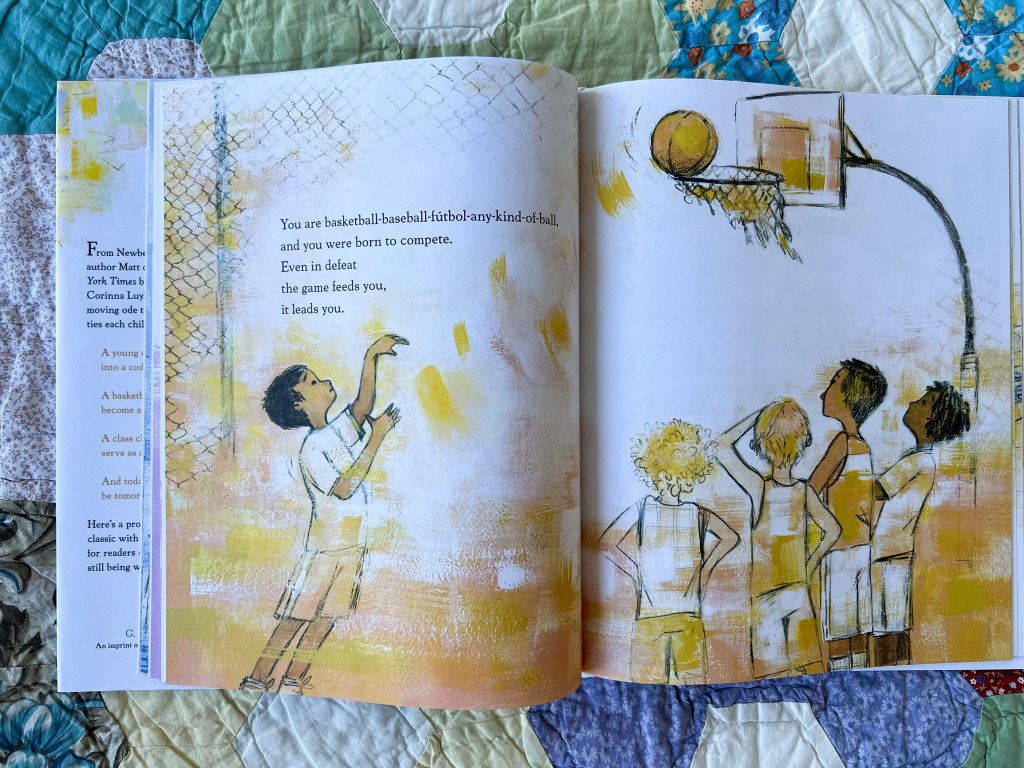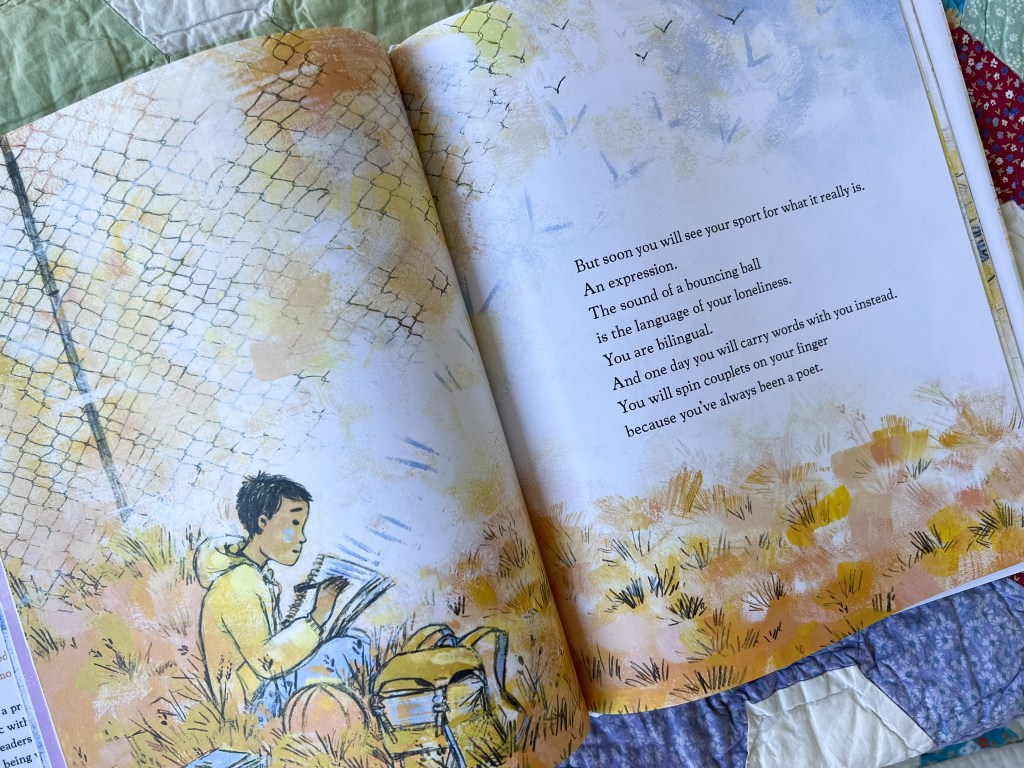Welcoming Surprise
September 15, 2022 § 3 Comments

As a parent, one of the things I continue to wrestle against is the temptation to label my children, to fit them inside tidy little boxes for the sake of proving (to the world? to myself?) that I’ve got everything figured out. On the one hand, of course I know my kids aren’t some puzzle begging to be solved; on the other hand, everywhere we turn as parents, we’re being asked to declare our children’s interests, to commit to one sport at the exclusion of others, to sum up their personalities for new teachers or turn them into soundbites for small talk with other parents.
If we’re talking labels, then my son is a math and science kid. Has been for a long time. He will tell you his plan is to be a rocket scientist for NASA, and he will steer almost every conversation at the dinner table back to whatever launch attempt has been in the news that day. As parents, all we want is for our kids to find something they love, so phew, let’s check that box and call it a day.
But wait. What about his eye for color and design? His love of drawing photo-realistic animals on birthday cards? What about the fact that he was the first one in our family who could handle our traumatized puppy, the first one to leash him and teach him tricks? What about his love for Anne of Green Gables that (almost) rivals mine?
What else might I miss by boxing him in?
Though he has an indisputable aptitude and passion for math and science, his favorite class last year was actually history, a class comprised of reading, writing, and public speaking. He has an obsession with current events that grew out of stress-induced vigilance but has morphed into a fascination with politics and economics. He has loved swimming, then hated it, loved running, now finds his interest depends on the day. He used to wince when a soccer ball flew at him, but last year I watched as he ran straight into the action on the basketball court, so maybe my telling people for years that, “yeah, he doesn’t like contact sports,” wasn’t actually true.
Will he grow up to become a rocket scientist? Quite possibly. Might he grow up to do any number of things seemingly incongruous with that goal? Quite possibly. All I know is that the more I can get out of the way, the freer he is to be open to possibility. And to surprise those of us along for the ride.
Easier said than done. That’s why we need frequent, insightful reminders.
You are more than a single note—
played again and again.
You are a symphony.
You are sounds plucked from all the places you’ve been
and all the people you’ve met
and all the feelings you’ve felt.
You are blues and pinks and loneliness and laughter,
mismatched scraps accumulated over time
and stitched together
into a kind of patchwork.
These resounding words come near the end of Patchwork (Ages 5-10), a stunning collaboration between two of our family’s favorites: Matt de la Peña (of Last Stop on Market Street) and Corinna Luyken (remember when I interviewed her here?). A paean to self-discovery, the book speaks to the capacity of children to change. Even as it highlights six specific children’s experiences, the second-person narration feels universal: the “you” is at once the child pictured in a pink tutu and the young reader studying her on the page.
Earlier this month, I read the book to my own children, despite them being well outside the target age, and I watched as a kind of peace settled around them. “What did you like about the book?” I asked. My daughter was quick to say she liked Corinna’s choice of a different color for each of the children’s stories (something I’ll talk more about in a bit).
My son took longer to think. Finally, he spoke: “I liked the way the children were always surprising the adults.”
In its invitation to witness and celebrate the surprises of self-discovery, Patchwork succeeds in both affirming the curiosity our children already know to be inside them and reminding those who love them to make room for that curiosity.
A child eats and sleeps dance—“you dream in one-two-three, one-two-three”—but when they get older, these rhythms become math, translating into a love of coding that will “change the way the world moves.”


Another child goes “everywhere with a ball,” a fierce competitor on the field and court, but one day they realize the sound of the bouncing ball was an attempt to fill the silence of loneliness. As we watch, that same child “spin[s] couplets on [their] finger” in the form of poetry that connects, assuages, completes.


Though the second-person narration means the only pronouns assigned to these children are “you,” the artwork hints at challenging traditional gender norms: an artistic girl becoming a mathematician, an athletic boy becoming an artist. Similarly, the book nudges its readers to think about the expectations that adults layer on top of children’s personality traits.
A child who is “perpetually in time-out”—“we sigh, we sigh”—becomes someone with a celebrated gift for making others laugh, a teacher who goes on to identify and connect with the “restless kid” at the back of the class.

The child who is “kind to everyone and everything,” who has everyone around them boasting of their goodness, becomes a force to be reckoned with. “[D]o not mistake kindness for a weakness,” we’re told, as the child, now an emergency responder, is swarmed by crowds looking for “guidance, eager to follow.”

If you’re familiar with Corinna Luyken’s past works, you know color plays an essential role in bringing the “emotional core” of her stories to the foreground. (When I interviewed her for A Tree in Me, she told me, “Color is my first love. It’s the entryway into all of my projects […]”) In Patchwork, each child is introduced with a single wash of color behind them. As their story evolves, new colors seep in. We can’t always tell where one color stops and the other begins—it’s intentionally messy because growing up is “hard to follow”—and the original color still dominates on the page. But the result is a kind of palimpsest of lived experiences, represented by a literal gouache patchwork.

Finally, at the book’s end, we get another kind of patchwork. The original children’s faces are joined by dozens of others, a beautiful array of ages, skin colors, hair styles, eye shapes, experiences. A testament to what happens when our own colors join those around us, when the sum of our diversity is a beautiful, marvelous, imperfect patchwork—always changing, always surprising.

As we transition into this new school year, who wants to join me in welcoming surprises from our children? Instead of hyper-focusing on their journeys of self-discovery, let us tune into our own, reminding ourselves that we’re symphonic in our own right. Let’s run or jump or dance our way out of those constraining boxes and relish the freedom that comes from the recognition that we’re only getting started.
Have you enjoyed this post? Make sure you don’t miss others! Enter your email on the right hand side of my homepage, and you’ll receive a new post in your inbox 3-4 times a month. Plus, follow me on Instagram (@thebookmommy), where I’m active most days, posting reviews and updates on what my kids are reading, or Facebook (What To Read To Your Kids) and Twitter (@thebookmommy).
Book published by Putnam. All opinions are my own. My links support the beautiful indie, Old Town Books, where I am the buyer for the children’s section.
Oh I love this post so much ! Thank you
Sent from my iPhone
>
Thank you so much, Aga!
Thank you! This is beautiful.
Nonno
Sent from my iPhone
>